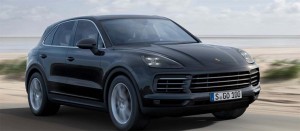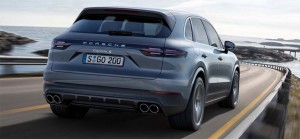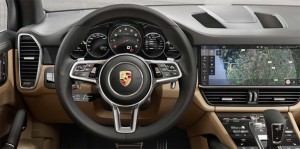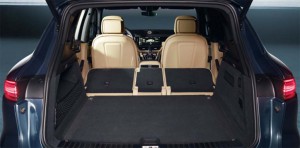It might seem hard to believe but there was a time, not all that long ago, when skeptics predicted Porsche’s imminent demise. How, they asked, could a company known for sleek sports cars like the 911 ever imagine selling a sport-utility vehicle?
Well, we all know how that turned out. The Porsche Cayenne has been the German maker’s best-selling product almost since the day it debuted, encouraging it to add a second SUV, the Macan, to its line-up a couple years back. Indeed, the success of the Cayenne ushered in a dramatic shift in the high-line luxury market, just about every exotic brand now offering at least one SUV. And those, like Aston Martin, who don’t have any are rushing to join the crowd.
So, no surprise, Porsche is working hard to keep Cayenne fresh and a step ahead of the competition. The third-generation ute makes it official debut at the Frankfurt Motor Show next month, but we’ve gotten an advanced look at what’s coming.
(Porsche rated “Ideal” by owners in new survey. Click Here for more.)
Fourteen years after making its original debut, the new 2018 Porsche Cayenne picks up on some of the styling cues first seen on the smaller and newer Macan. That starts with a revised grille, three horizontal bars extending through the air intakes to either side. The headlights are now LED matrix beams that automatically adjust to avoid blinding oncoming drivers.
The Gen-3 Cayenne grows by about 2.5 inches, though the wheelbase remains the same. The roofline, meanwhile, is about a third of an inch lower. Cargo capacity is a main beneficiary, growing 15% to 27.2 cubic feet with the rear seats up.
In the cabin, the 2018 Cayenne introduces the Porsche Advanced Cockpit. As with the latest-generation Panamera, the German marque has moved away from the daunting cluster of controls that overwhelmed the center console – as well as the average driver. Many of those switches and knobs have now been consolidated into the 12.3-inch full-HD touchscreen borrowed from Panamera.
The entire electrical architecture of the Cayenne has been redesigned, it turns out, switching over to a 48-volt system is says is “more athletic.” The extra power makes it easier to operate everything from the infotainment systems to Cayenne’s 4D Chassis Control, as well as the active rollbar and electric power steering systems. The Cayenne also features a moto-operated rear-steer system similar to what’s already offered on the 911.
We’re anticipating Porsche has even more tricks up its sleeve to roll out over the next several years. Sibling brand Audi is already working up an electrically powered turbocharger that, by using a motor to spool up its turbine blades, avoids that frustrating turbolag. Don’t expect Porsche to wait long for similar technology, as they are both part of the Volkswagen Group and are already sharing numerous parts and technologies.
Porsche has also been working with premium luxury brand Bentley, and the new Cayenne shares its MLB platform with both the Bentayga and the new Audi Q7. That chassis makes use of light high-strength steel and, when you add the all-aluminum body panels, the 2018 Porsche Cayenne sheds 143 pounds of mass compared to the outgoing model.
We expect to see a range of gas and diesel engines for the Cayenne, but Porsche is debuting the new model with two new powertrain options:
(Porsche readying a flood of new performance models. Click Here for the story.)
-
A 3.0-liter turbo-six making 335 horsepower and 332 pound-feet of torque. That’s enough to get you to 100 kmh – or 62 mph – in 6.2 seconds, with a top speed of 152 mph;
- The performance package is a 2.9-liter twin-turbo-six punching out 434 hp and 406 pound-feet. That pulls you to 100 kmh a full second faster – and comes in at 4.9 seconds if you opt for the Porsche Chrono package – with a top speed of 165 mph.
Look for a diesel option to follow, and U.S. CEO Detlev von Platen hints a Turbo V-8 will be on display at the Frankfurt show, as well. Expect the now-requisite Turbo S E-Hybrid to follow sometime in 2018.
(Will Germany, home of the Autobahn, ban gas and diesel power? Click Here to find out.)




